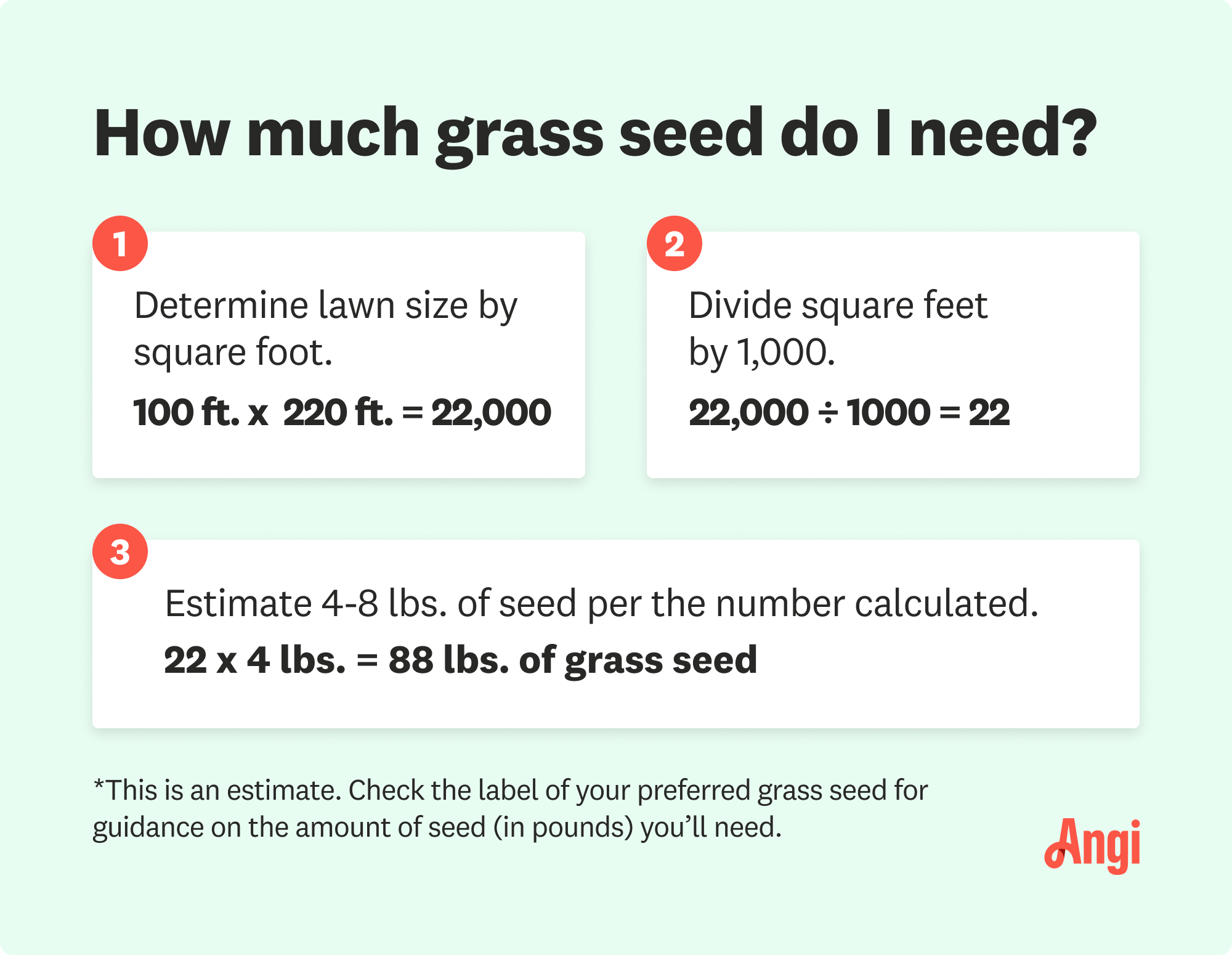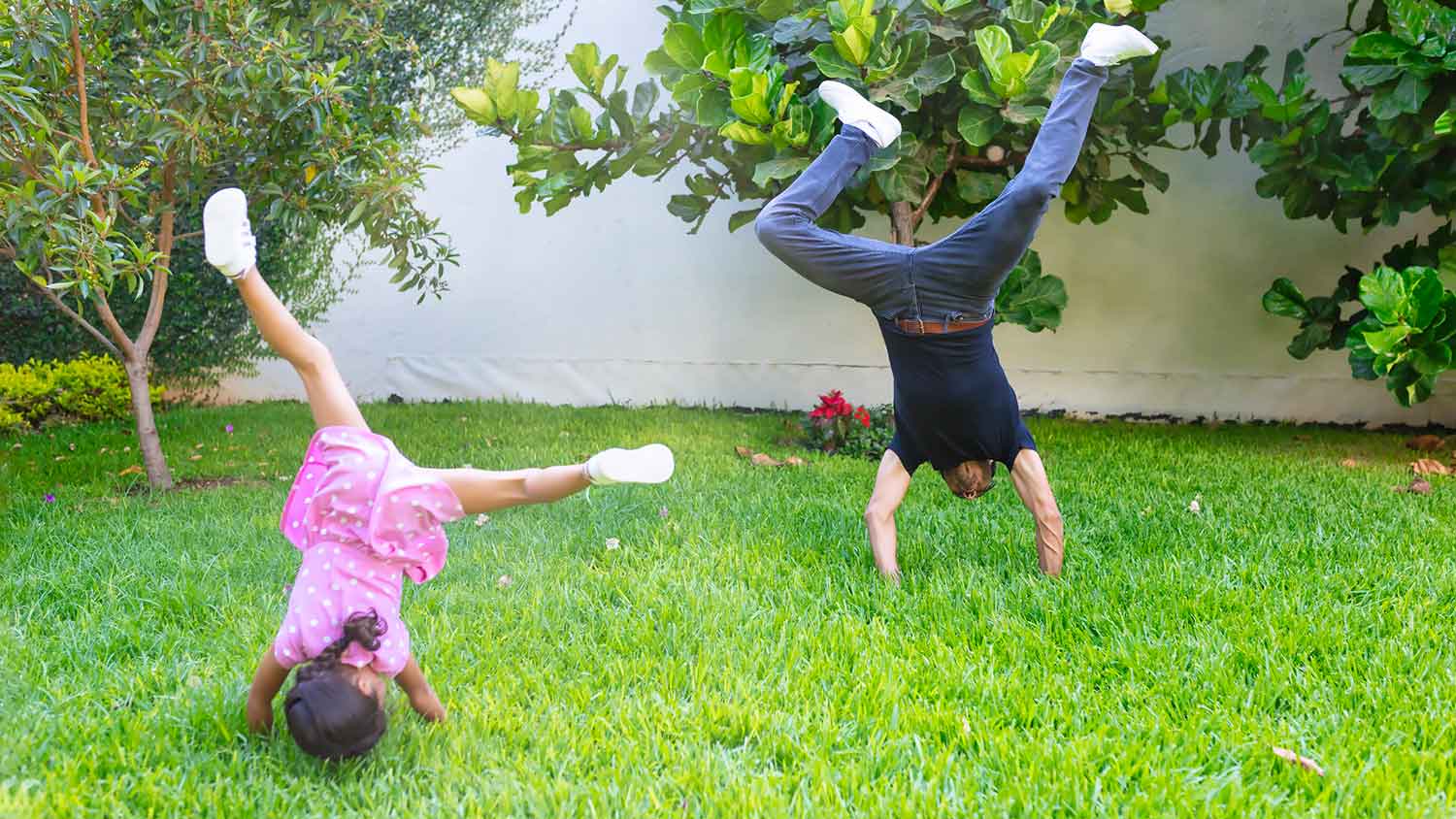Since grass seed germinates on top of soil, you can plant it evenly across the surface of loose, fertile soil. Use a broadcast spreader or a rake to ensure the seeds are spread as evenly as possible for best results.
Once you’ve spread the seeds, add a light layer of hay, just enough that patches of soil are still peeking through. This additional step will shield the seeds from wind and hungry birds and help the soil retain moisture during the growth process. Be sure to use hay rather than straw—straw may contain weed seeds that can implant and germinate along with the grass seeds.
Follow up with a full watering to saturate the soil without flooding the seeds. Continue monitoring the seeds and keeping the soil moist as the seeds germinate and grow.
How Long Does Grass Seed Take to Germinate?
Depending on the type of grass seed, germination can take anywhere from seven to 21 days. Continue keeping the soil consistently moist to help it grow full and healthy. As for knowing when to mow new grass, wait around eight weeks after seeding, or until your grass can be mowed to a height of three inches.
Certain types of grass, like Bermuda and Zoysia grass, grow best at a high of 1½ to 2 inches. Never mow more than ⅓ of the grass height to avoid stressing your lawn.
Tips for Planting Grass Seed on Top of Soil
Here are some tips to keep in mind to ensure a successful, thriving lawn:
Water new grass seeds at least twice daily to keep the soil moist.
Consider investing in guaranteed weed-free hay to ensure you’re not implanting weed seeds in your new lawn.
Choose the right type of grass seed that naturally thrives in your area’s climate and soil conditions.
Fix sparse areas by laying fresh grass seeds to germinate on top of the soil.
Hire a local lawn seeding service to help prepare tough soil, plant grass seeds, and maintain your lush, healthy lawn.











